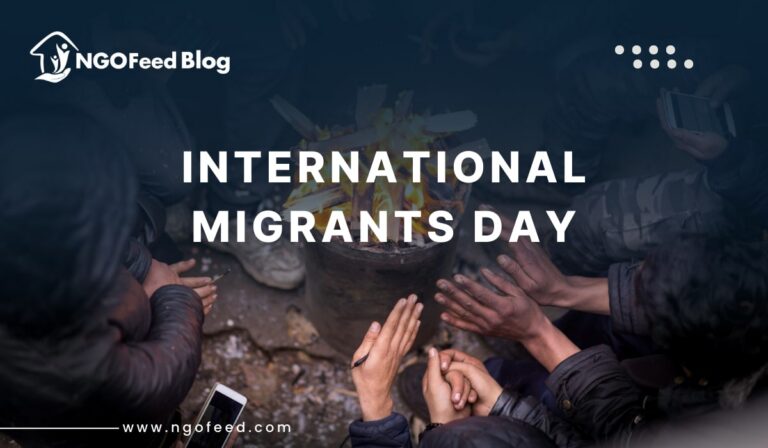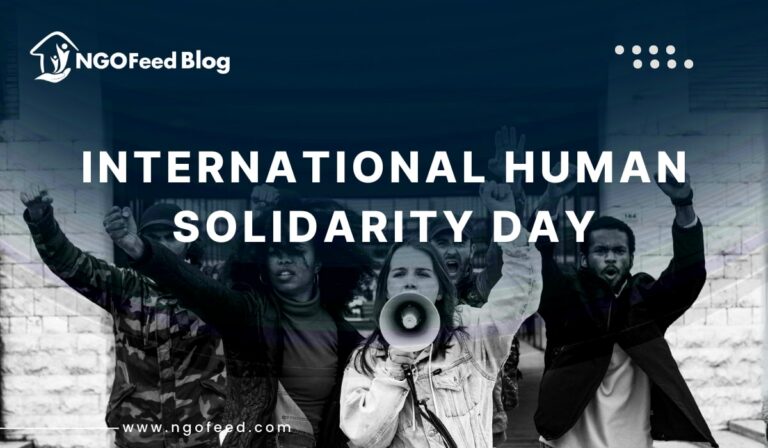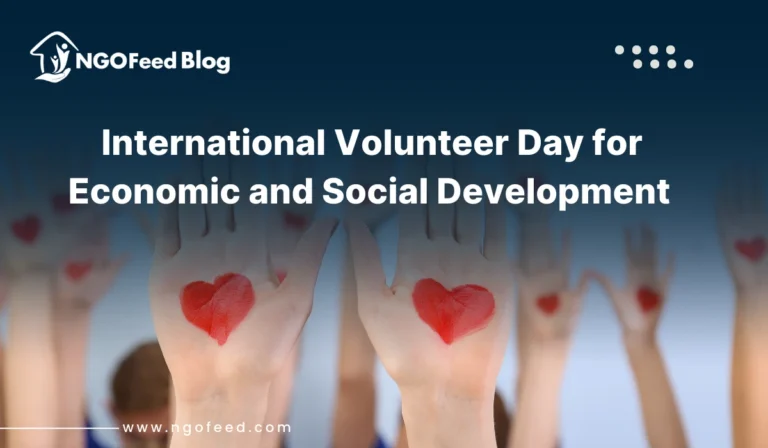What Are the Challenges Faced by NGOs in India: Among the most energetic and powerful pillars of India’s socio-economic framework are NGOs. Acting as a bridge between the government and residents, NGOs try to guarantee social justice, advance sustainable development, and safeguard the rights of underserved groups. From women’s empowerment and healthcare campaigns to environmental protection projects and rural education efforts, their contributions are far-reaching and significant.
India has among the biggest NGO networks in the world; estimates indicate one NGO for every 600 individuals. Still only a few NGOs are active, efficient, and clear despite this tremendous presence. The sector is confronted with complex obstacles that jeopardize its credibility and viability. These problems result from government limitations, financial instability, bureaucratic obstacles, lack of professionalism, and public distrust.
Understanding these problems thoroughly requires examination of the structural, operational, financial, and socio-political obstacles affecting the operation of NGOs in India.
Table of Contents
1. Funding and Financial Viability
- For most Indian nonprofits, financial stability continues the one biggest obstacle.
- Many NGOs are reliant on outside funding from development organizations, philanthropic groups, and foreign foundations as well as governmental agencies.
- Limited local fundraising: In India, the tradition of individual or corporate contributions to NGOs is still evolving and competition for local contributions is fierce.
- Donor funds are usually linked to particular projects with little leeway, therefore there is little opportunity for innovation or administrative costs.
- FCRA regulations: Small nonprofits find it challenging to get or use foreign funding as changes to the Foreign Contribution (Regulation) Act (FCRA) have complicated things. Funding shortages have forced several companies to close down as a result.
- Example: Many NGOs, Oxfam India and Amnesty International India among them, stated problems running following their FCRA licenses were revoked or expired in 2020.
- Impact: Irregular wages, project cancellation, and employee attrition brought on by a lack of consistent funding finally undermine the purpose and impact of the NGO.
2. Legal and Bureaucratic Hurdles
India’s legal and administrative system for NGOs is very intricate. NGOs can be registered under several laws as:
Registration of Societies Act, 1860
Indian Trusts Act of 1882
Companies Act, 2013 (Section 8)
- Every system has specific compliance requirements pertaining to annual reporting, auditing, and taxation. Furthermore, foreign donation handling NGOs need to adhere to FCRA rules and regularly report fund use.
- Small nonprofits face challenges from lengthy registration procedures, regular policy changes, and complex paperwork.
- Inconsistent law implementation throughout states adds yet another level of complexity.
- Impact: Rather than concentrating on field activities, many NGOs waste a lot of time and money supervising documents and legal compliance.
3. Omission of Accountability and Transparency
- Though many NGOs find it difficult to establish transparent and responsible financial and operating policies, openness is a fundamental building block of trust.
- Some NGOs do not release audited statements or yearly reports, making it difficult for beneficiaries and contributors to evaluate their efforts.
- Few companies’ misappropriation of funds scandals compromise the reputation of the whole industry.
- Donors now seek quantifiable results and data-driven proof of influence, which many NGOs are unprepared to deliver.
- Example: The government increased monitoring systems in response to reports of fictitious NGOs stealing money in states like Uttar Pradesh and Maharashtra.
- Influence: Erosion of donor confidence and public trust causes decreased credibility and support.
4. Improper professional management
- Though many NGOs are started by enthusiastic people, they frequently lack official management education.
- Growth is hampered by feeble organizational structures, no strategic planning, and inadequate human resource policies.
- Many NGOs are unproductive because they do not adhere to organized monitoring and evaluation systems.
- Lack of educated financial, communication, or technology professionals limits their operational capacity.
- Effect: Limited scalability, inefficiency in resource use, and bad project execution.
5. HR Issues
- NGOs’ lifeblood is people; nevertheless, recruiting and retaining competent staff is still a major problem.
- Low pay scales cause NGOs to have high attrition rates as they cannot match corporate wages.
- Employees often work in demanding situations, which cause fatigue and stress—emotional burnout.
- Over-reliance on part-time volunteers causes inconsistency and lack of responsibility.
- Lack of professional development possibilities lowers both motivation and capacity by means of training gaps.
- Impact: Frequent staff turnover hinders institutional memory and long-term strategic consistency.
6. Government Regulations and Political Pressures
- Often difficult and sometimes hostile is the connection NGOs have with the government.
- NGOs that challenge governmental policies or advocate human rights occasionally come under increased scrutiny.
- Some companies have said that because of their advocacy positions, they experienced intimidation, permit cancellations, or project approval denials.
- Though the government usually justifies tighter regulation on funds abuse prevention and national security assurance, overregulation can stifle genuine social activism.
- Example: Greenpeace India’s FCRA license was temporarily suspended in 2015 because of claimed violations, hence impacting environmental advocacy activities.
- Impact: Restraint of operational freedom and fear of reprisal discourage open advocacy and limit the diversity of voices in civil society.
7. Bad Networking and Coordination
- Cooperation among NGOs is essential for shared resources and collective influence; nevertheless, many work independently.
- Rather than creating partnerships, small firms frequently fight over the same funding sources.
- Lack of national or local networks diminishes policy influence.
- Small partnerships with government agencies or the corporate sector (CSR) limit scalability.
- Effect: Duplicate of efforts, wasteful resource usage, and little long-term policy change.
8. Technological Backwardness
- Particularly in rural and semi-urban areas, the digital divide greatly influences NGO effectiveness.
- Many NGOs have no digital framework for data gathering, online communication, and fundraising.
- Restricted use of digital narrative and social media impacts donor participation and visibility.
- NGOs without digital resources had difficulty organizing aid operations or getting to recipients during the COVID-19 epidemic.
- Impact: Missed opportunities for innovation, subpar documentation, and decreased efficiency.
9. Donor Dependence and Limited Self-Sustainability
- Over-reliance on outside givers exposes NGOs to fluctuating political and economic conditions.
- Many charities are compelled to change their emphasis as funding priorities change, which results in “mission drift.”
- Very few NGOs investigate sustainable income models, including fee-based services or social businesses.
- Though only a minor portion gets to smaller, rural NGOs, domestic giving in India is expanding.
- Effect: Financial instability and loss of independence in long-term planning.
10. Insufficient Monitoring, Evaluation, and Impact Assessment
- Measuring influence continues to be very difficult.
- Most NGOs assess success on activities (number of people trained, workshops given) instead of outcomes (real behavioral or social change).
- Donors are increasingly demanding evidence-based reports, yet data collection systems are poor.
- Furthermore, restricting trustworthy evaluation is a lack of knowledge of statistical and social research techniques.
- Impact: Lack of impact evidence leads to lower stakeholder confidence and financial support.
11. Urban-rural division
- Urban regions, where donor and media access is simpler, have a great concentration of NGOs.
- Still underappreciated are rural and remote areas where the need is highest.
- Poor roads, internet, and communication—infrastructural problems impede rural activities.
- With little emphasis on agriculture, tribal rights, or rural life, urban bias influences the types of problems NGOs concentrate on.
- Impact: Uneven social growth and disregard of marginalized communities.
12. Public Trust and Perception Gap
- Public opinion of NGOs is a double-edged weapon. Many consider them champions of social benefit; others question fund abuse or hidden agendas.
- Media coverage on fake charities has undermined the credibility of the industry.
- This situation is made worse by ignorance about the real efforts thousands of local groups are making.
- Corporations and donors are reluctant to interact with smaller NGOs without established credibility.
- Effect: Less participation from volunteers, local donors, and citizens.
13. Absence of research orientation and creativity
- Many NGOs use conventional approaches of charity and service delivery instead of using contemporary, research-based ones.
- Lack of contact with universities, research organizations, and technical inventors restricts creativity.
- Many times, NGOs lack methods for ongoing learning, influence analysis, and policy advocacy.
- Lack of creativity lowers ability to adapt to changing social problems.
- Impact: Unchanging project results and decreased relevance in contemporary development situations.
14. Leadership and Gender Inequality
- Although NGOs push equality, leadership frequently remains male-dominated, particularly in rural locations.
- Lack of decision-making influence, unfair pay, and safety issues define women employees.
- This runs counter to the inclusive principles many nonprofits espouse outside.
- Impact: Gender inequity undermines the authenticity and organizational representation in gender-based advocacy.
15. Global and Environmental Challenges
- Global issues like climate change, pandemics, and international conflicts affect Indian NGOs by diverting donor attention and funds.
- The COVID-19 crisis, for example, forced many NGOs to quickly change their priorities to focus on relief work, halting ongoing projects.
- Environmental damage and natural disasters also put pressure on resources and logistics.
- Impact: Frequent disruption of long-term social programs and uncertainty about funding.
Strategies to Overcome the Challenges
- Diversified Funding: Create local fundraising models, CSR partnerships, and crowdfunding platforms to reduce reliance on a few donors.
- Transparency and Governance: Publish annual reports, audited statements, and real-time data to build trust with stakeholders.
- Professional Training: Invest in leadership development, digital skills, and financial management workshops.
- Networking and Collaboration: Strengthen partnerships among NGOs and with government or business partners to share knowledge and resources.
- Technology Integration: Use digital tools for monitoring, communication, and making decisions based on data.
- Community Ownership: Encourage local communities to take part in planning and evaluation to ensure relevance and accountability.
- Policy Engagement: Work with lawmakers to create a supportive regulatory environment for civil society.
Conclusion
Despite facing many challenges, including financial, bureaucratic, and structural issues, NGOs in India remain a key part of the nation’s democratic and humanitarian framework. They supplement government efforts by reaching areas where the state often falls short, addressing the needs of marginalized populations with care and creativity.
For NGOs to stay effective and trustworthy, their operations must be guided by transparency, professionalism, and innovation. The government, private sector, and citizens need to view NGOs as vital partners in nation-building instead of seeing them as rivals or charity providers.
By encouraging collaboration, accountability, and sustainable funding, India can tap into the true potential of its civil society, creating a future where development is inclusive, fair, and participatory.
Frequently Asked Questions (FAQs)
Why do NGOs face funding issues in India?
Because of dependence on short-term foreign aid, limited domestic fundraising, and strict FCRA regulations.
What are the major legal acts governing NGOs in India?
The Societies Registration Act (1860), Indian Trusts Act (1882), and Section 8 of the Companies Act (2013), along with the Foreign Contribution Regulation Act (FCRA).
How can NGOs improve their credibility?
By maintaining transparent financial practices, regular audits, and open communication with stakeholders.
How does technology help NGOs?
Digital tools aid in monitoring, fundraising, communication, and reporting, making operations more efficient and accountable.
What is the role of the government in supporting NGOs?
To create a balanced regulatory framework, provide financial incentives, and facilitate collaborations that enhance community.










